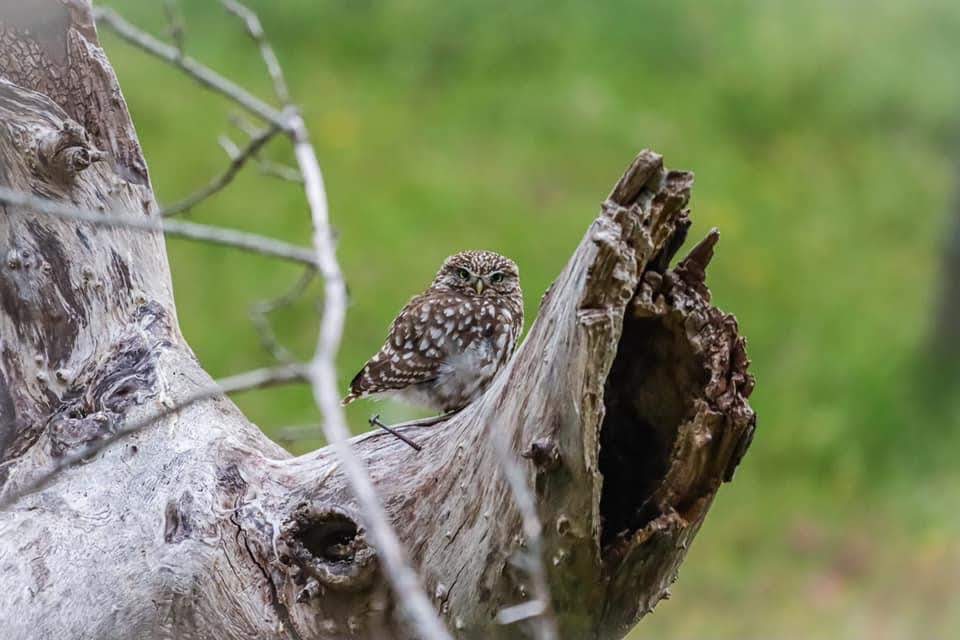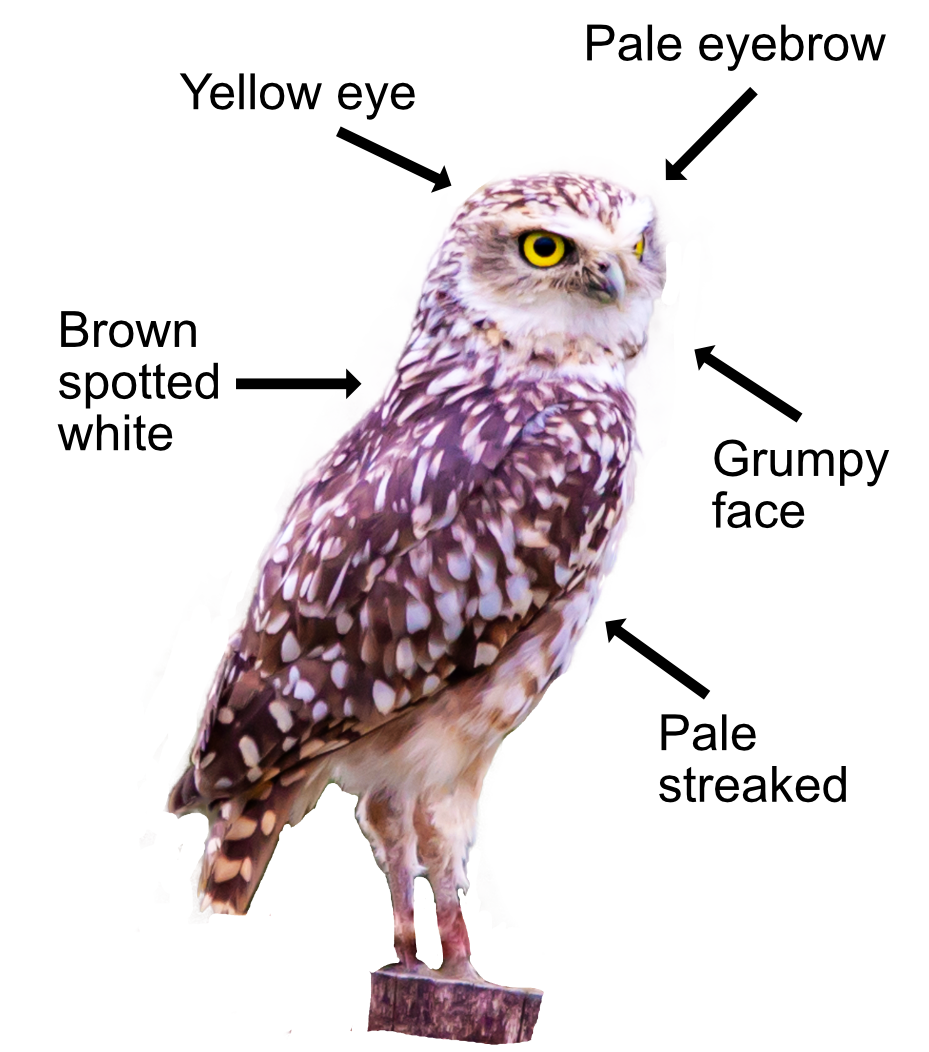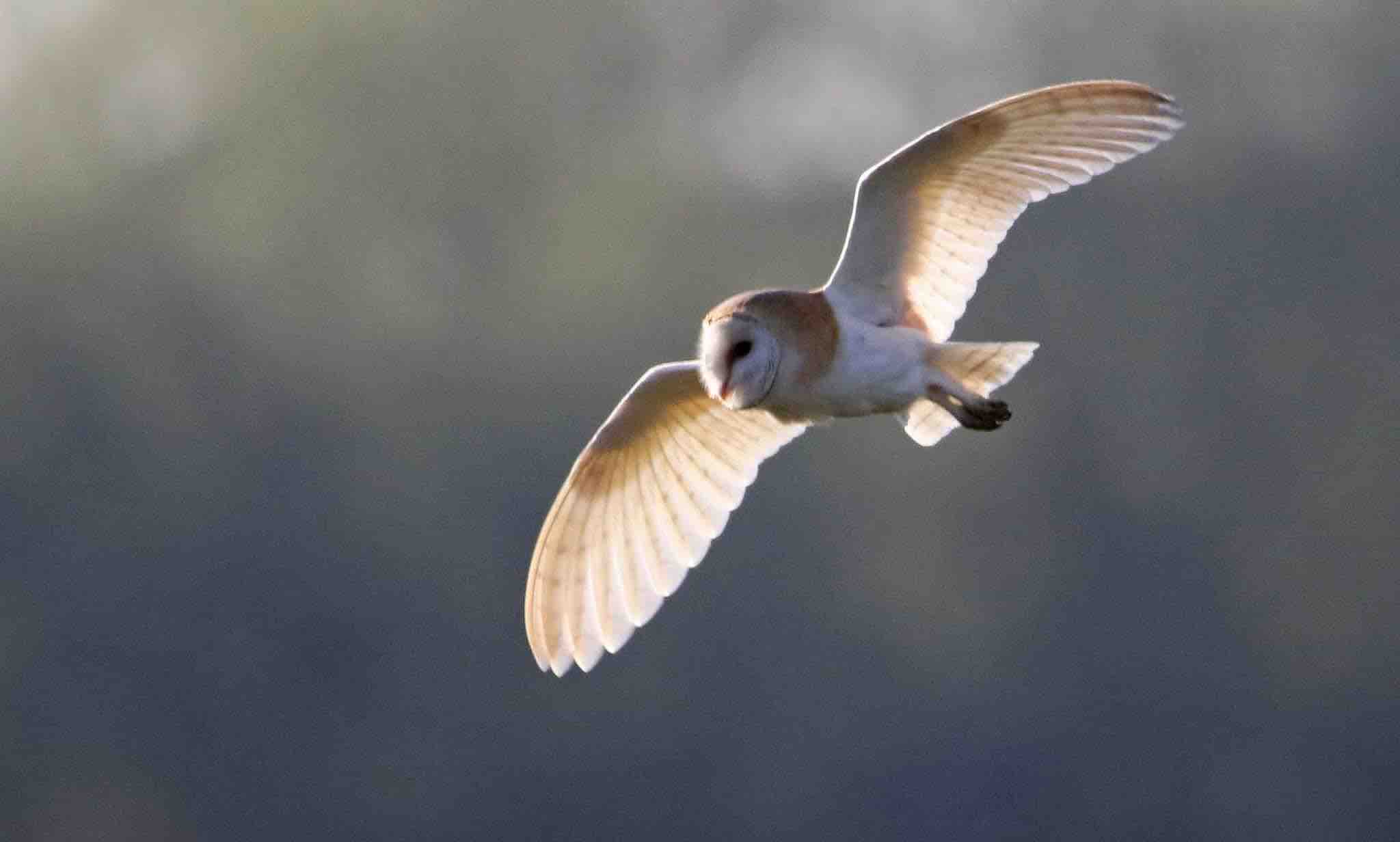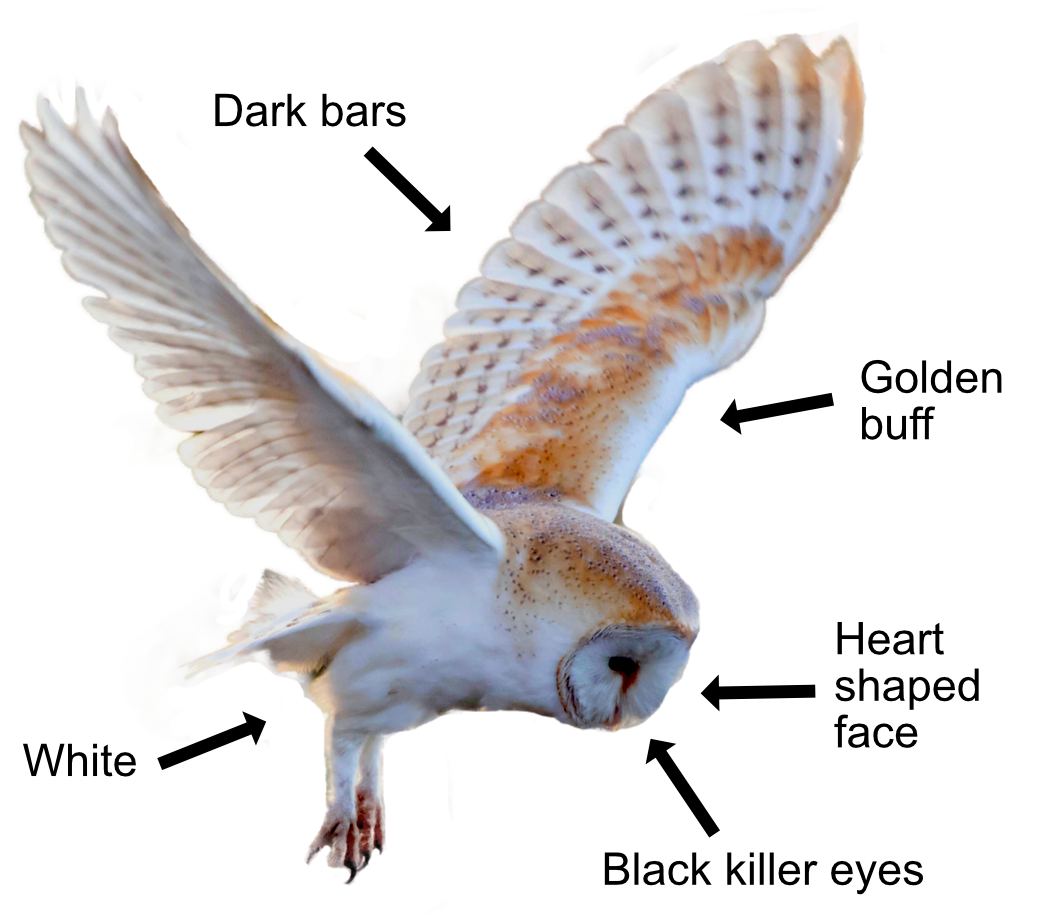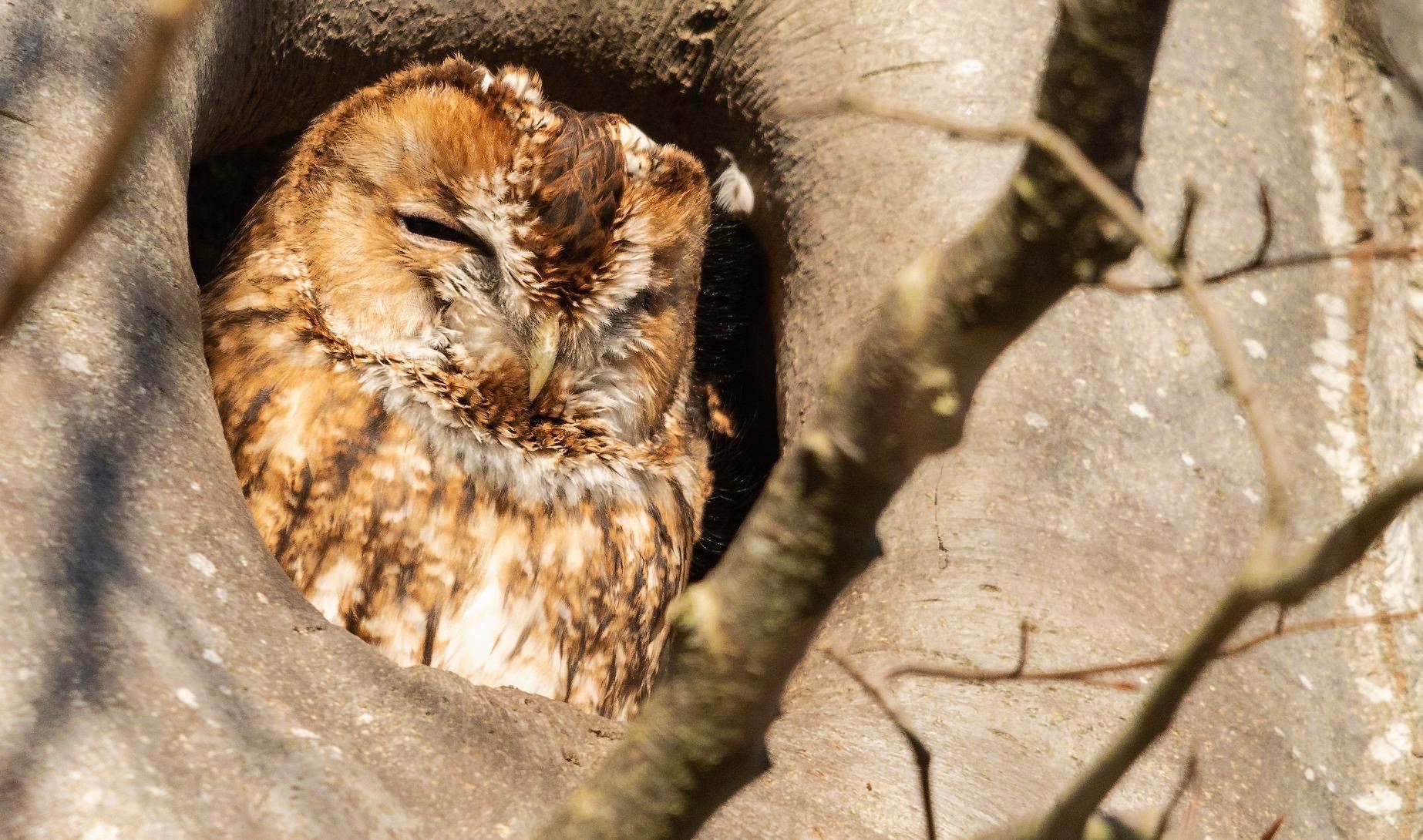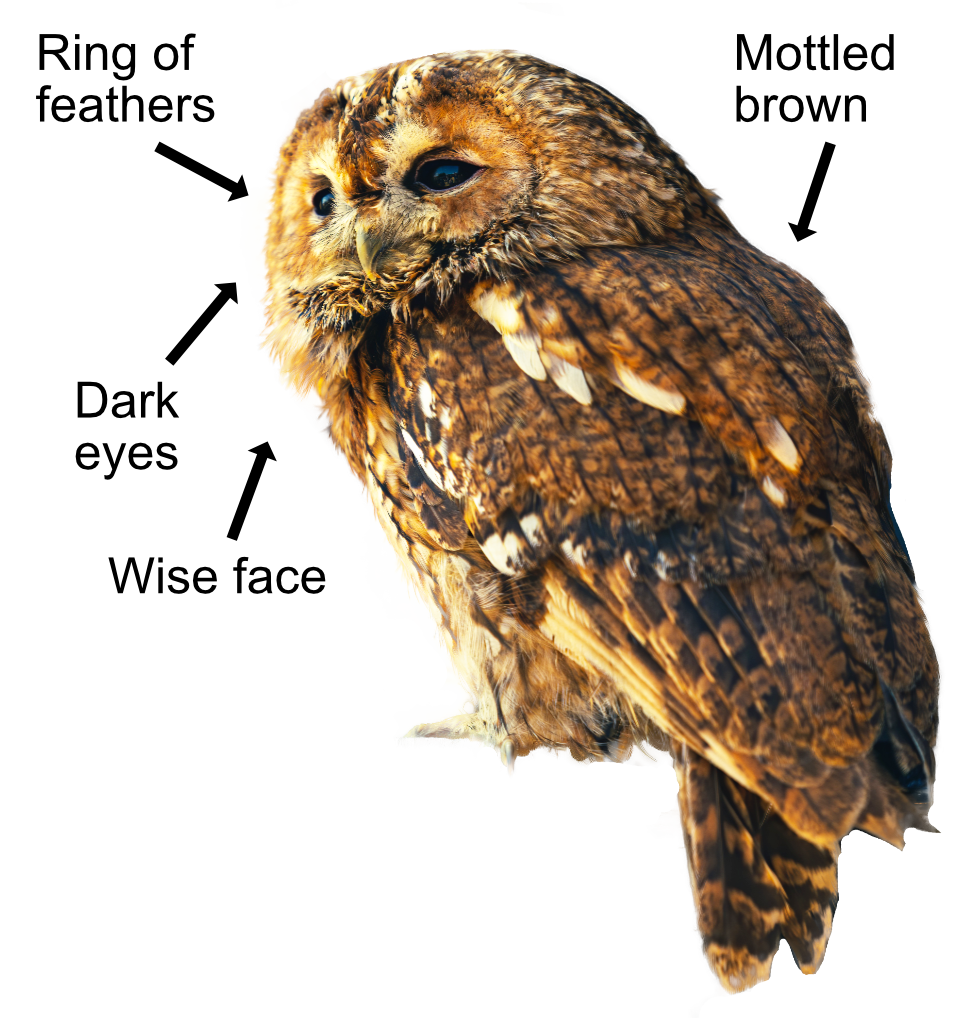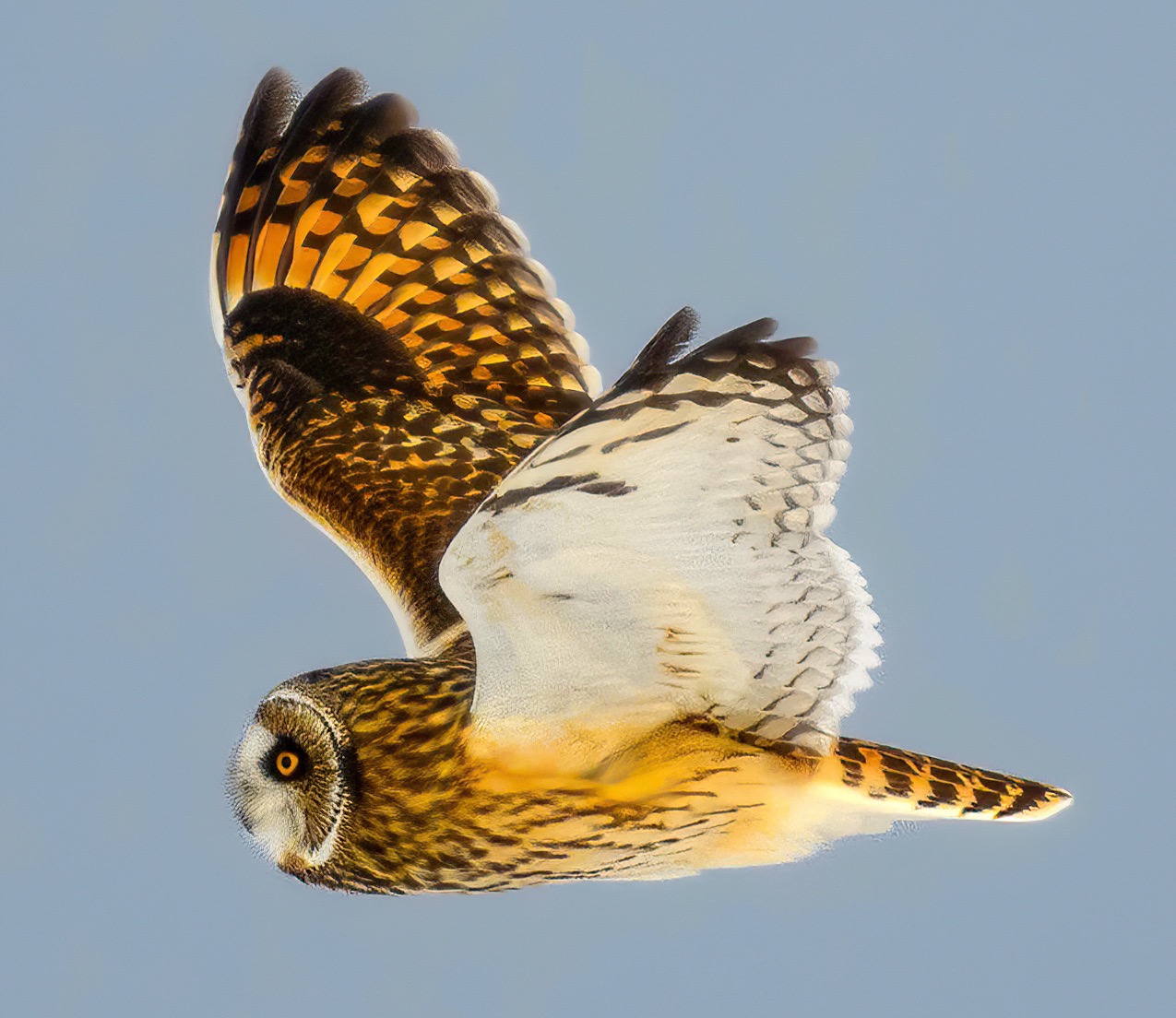
Short-eared Owls mainly hunt during the daytime, flying barely above the ground over moorland, grassland and salt marshes searching for voles, which are their favourite food. Their 'ears' are two feather tufts that you can only see when they are feeling grumpy or alarmed. You are more likely to see a Short-eared Owl in the winter as northern European Owls join ours on coastal marshes and numbers swell.
The Short-eared Owl is larger than a Barn Owl with a round face and fierce, staring yellow eyes surrounded by black rings to make them look even fiercer. They have a mottled brown body, a streaked breast, and a pale belly and flanks. Their wings are long and narrow with black tips and a dark mark at the 'elbow'. Their short tail has four strong bars. They hover and glide with a few floppy wing beats, feet above the ground. The Short-eared Owl gives a short bark when alarmed but is otherwise silent except when singing its low hooting "boo boo boo" song. Like many raptors, the female is slightly larger than the male and a lot bossier.
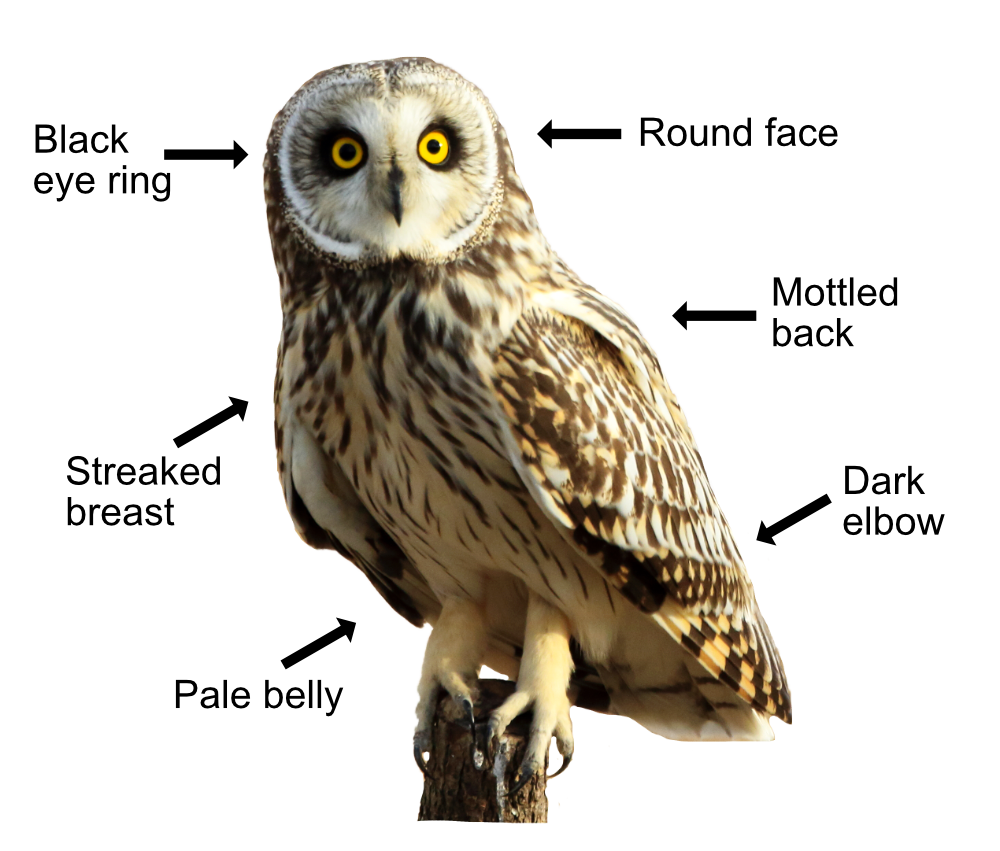
Their main food is small mammals such as rats, mice, squirrels, and small rabbits. Short-eared Owls will also eat birds up to Thrush sized and insects and frogs if pushed, but their favourite snack is voles which make up to 65% of their diet. They catch their prey by swooping down feet-first on top of them. Like all Owls, because of the low acidity of their stomachs, they can't easily digest bones and have to eject them as pellets.
Short-eared Owls are able to breed after one year. In spring, the male attracts a mate by doing an aerial display above his moorland territory, clapping his wings below his body and showing off. The nest is a scraped-out hollow on the ground lined with grass and downy feathers, concealed by low vegetation. Mum lays her 4-8 white eggs in March. They are spaced out over several days so that the youngsters hatch at different times. If food is short, only the oldest and strongest survive. The young owlets are fed by both mum and dad. After 15 days they leave the nest to hide nearby until they can fly 35 days later. Breeding success depends crucially on how many voles there are. On a year with plenty of voles, they may even have two broods.
There are about 2,000 pairs of Short-eared Owls in Britain and the population is stable. Numbers increase in the winter, especially on the coast, as Owls come over from northern Europe to join ours. Some of our Owls may move south to southern Europe. Winter numbers can fluctuate depending on food availability. Because Short-eared Owls are of European conservation concern, they are Amber Listed. The oldest ringed Short-eared Owl lived for 12 years.
Their Latin name is 'asio flammeus' where 'flammeus' means 'flame coloured' and 'asio' is the Latin name for a horned owl. We call them ears rather than horns but the flame colour is spot on. There are eleven subspecies of Short-eared Owls worldwide.
